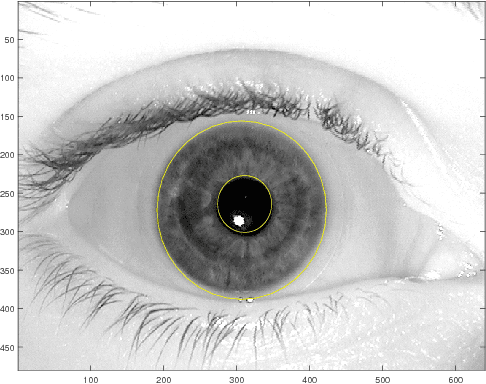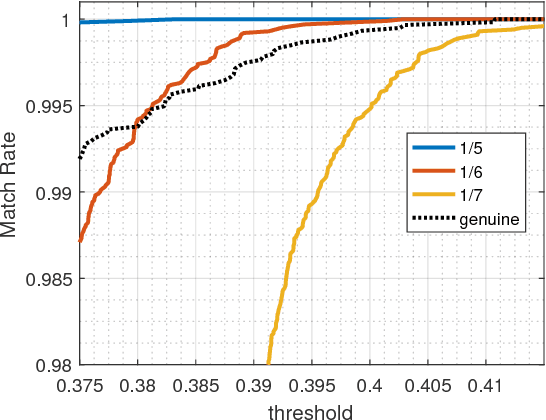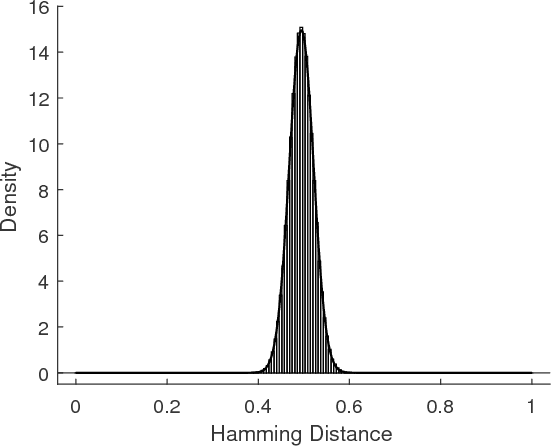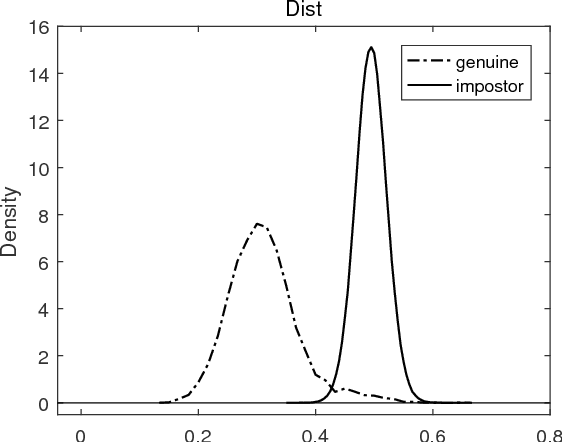Seeded Ising Model and Statistical Natures of Human Iris Templates
Paper and Code
Jan 03, 2018



We propose a variant of Ising model, called the Seeded Ising Model, to model probabilistic nature of human iris templates. This model is an Ising model in which the values at certain lattice points are held fixed throughout Ising model evolution. Using this we show how to reconstruct the full iris template from partial information, and we show that about 1/6 of the given template is needed to recover almost all information content of the original one in the sense that the resulting Hamming distance is well within the range to assert correctly the identity of the subject. This leads us to propose the concept of effective statistical degree of freedom of iris templates and show it is about 1/6 of the total number of bits. In particular, for a template of $2048$ bits, its effective statistical degree of freedom is about $342$ bits, which coincides very well with the degree of freedom computed by the completely different method proposed by Daugman.
 Add to Chrome
Add to Chrome Add to Firefox
Add to Firefox Add to Edge
Add to Edge